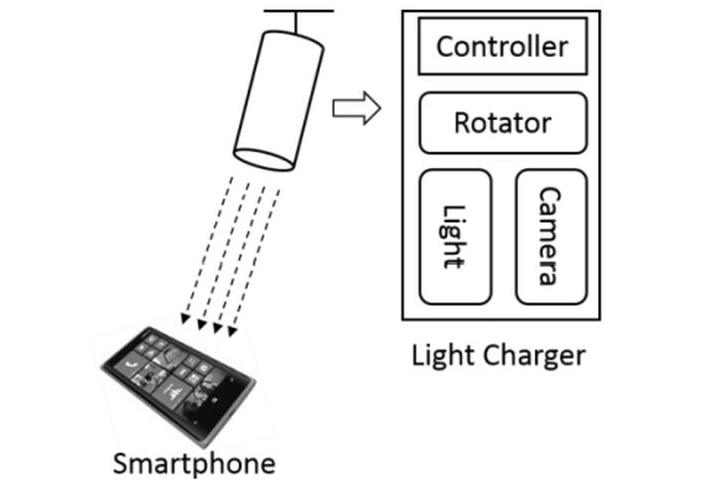
AutoCharge really aims to solve the problem of remembering to charge our phones at all, by using solar charging through a light beam projected from lamps on the ceiling. To make sure you don’t even have to remember to place the phone in a specific area, there are cameras to track the location of a phone in the room, then focus the charging beam on it automatically. This isn’t sci-fi either, Microsoft Research has published a paper on the system, which has reached working prototype stage.
Solar charging is a hit-or-miss affair, where weather conditions and the time of day drastically reduce its effectiveness. Microsoft Research has designed a straight light beam for use indoors, which focuses its charging ability directly on to a phone, to improve speed and charging efficiency. The Kinect-style camera monitors a particular area – a desk in an office for example – and when it sees a phone-shaped object appear, it activates motors in the lamp to direct its charing beam towards the device. It’s clever enough to know if the battery inside needs charging, or when it’s full, plus it can prioritize multiple phones on the same desk, charging them one at a time.
Automatically recharge your phone in just over two hours
Data taken from the prototype revealed a 2000mAh battery could be fully charged in around two-and-a-half hours using the method, and the camera took, on average, four seconds to recognize a smartphone placed in its field of vision. The light beam projected is “cool light,” and therefore won’t burn someone who gets in its way, or suddenly set your house on fire because it’s trying to charge a book. Still, a safety cutoff feature switches off the beam within 50ms when it sees something block its path.
Yes, it’s hugely complicated from a technical point of view, but for us, the AutoCharge system means we would only need to put a phone down in the right basic area for it to recharge. Microsoft says it’s the world’s first automatic smartphone charging system which uses a light beam. It envisages not only charging desks, but charging rooms using multiple lamps, and small charging cubes where a phone merely has to be put inside for it to charge up.
The biggest hurdle AutoCharge needs to overcome is the lack of solar charging systems inside the phone itself. Manufacturers would need to add a special charging system into new models for it to work. Additionally, Microsoft doesn’t see the AutoCharge system replacing traditional charging methods, because it’s unlikely to be installed everywhere we go, but a home system would be convenient.
The prototype is described as being “far away from a real product,” in the research paper, but that doesn’t stop it being an exciting, and technically amazing, step towards never having to remember to plug in our phones to recharge again.



